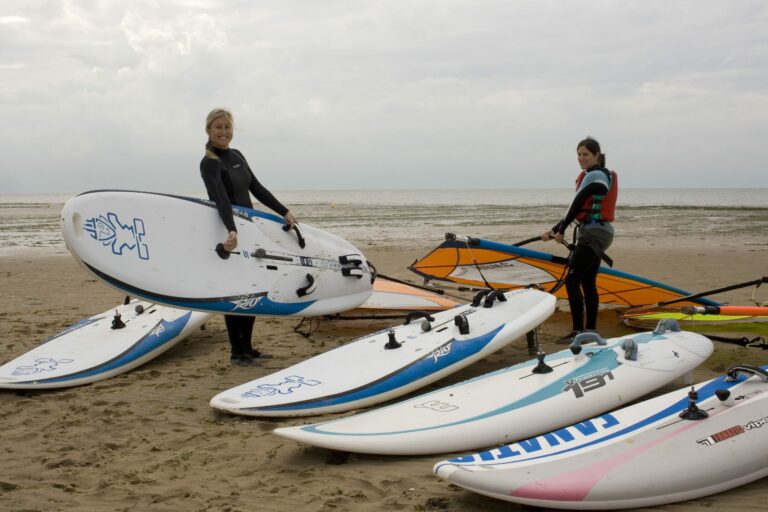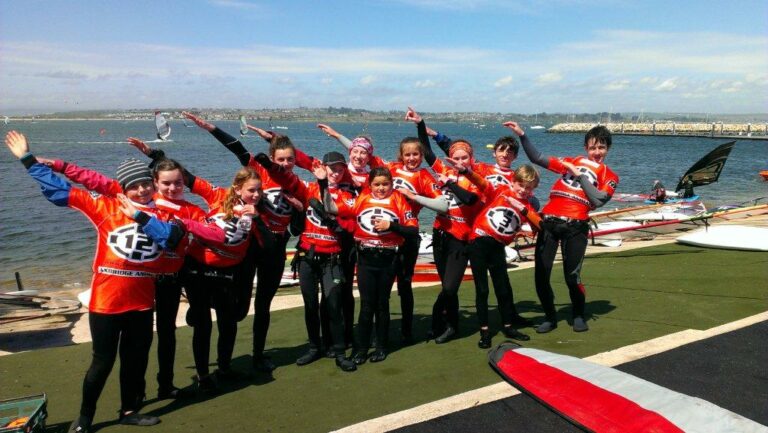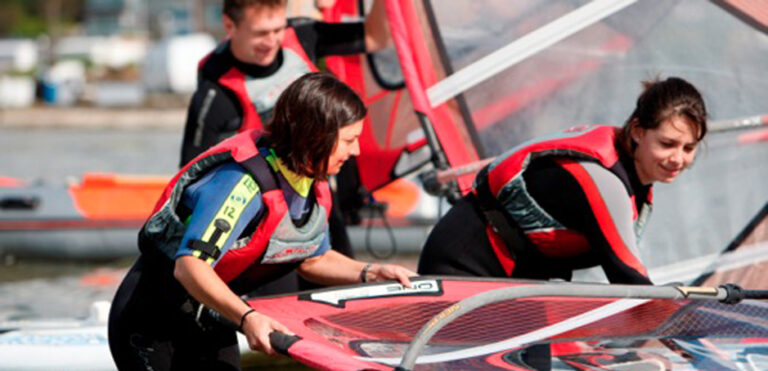Some love winter windsurfing and the extreme conditions, whilst some are proudly fair weather windsurfers, choosing to head out when the waters warm and winds blow. The RYA join Boards to guide those that have taken some time off the water back onto their boards safely.

The sun has peeked a couple of times from behind the snow clouds now and the less hardy of us may just be considering dusting off our windsurfing gear for the first time this year.
But just as you would get your kit up-to-speed to get the most out of your time on the water, you shouldn’t overlook what you can do to make sure your body is equally ready to really optimise the time and physical impact of your windsurfing this year.
RYA Physiotherapist, Matt McGovern, looks at the simple things you can do to make sure you don’t spend the summer nursing niggles or watching on frustrated from the shore.
Fit to windsurfWindsurfing is an extremely physical sport. It requires significant cardiovascular fitness and the full range of body movements from toe to head.
Windsurfers are continuously on it; there are very few off periods during a sail and as the wind changes so do the demands on the body. Lighter winds equal more exerted pumping, while when the wind gets up the focus switches more too muscular strength and endurance.
Many of the actions in windsurfing are the exact opposite to things we do in everyday life and windsurfers are in a half-squat position for much of the time, on an unstable platform, meaning balance is never split 50:50 between each leg.
A good aerobic base is really important as injuries happen when you’re getting fatigued, so the better your cardiovascular fitness and muscular strength and endurance, the longer you can windsurf without tiring and the less likely you are to pick up injuries.

Because it is a repetitive movement sport, we see lots of muscle imbalance and overuse injuries. So what can you do to get fit to windsurf?
Cycling – a lot of the top windsurfers, like London 2012 silver medallist Nick Dempsey, are big cycling fans because it uses the same main leg muscles groups – quadriceps and hamstrings – as you need to hold a constant squat position in windsurfing. It’s also excellent for aerobic fitness.
Rowing – is a really good cardiovascular work-out but it also replicates the windsurfing actions of pushing with the legs and pulling with the arms.
Swimming – is non-weight bearing but it’s a full body sport, like windsurfing, and the rotational element of freestyle and backstroke especially produce very similar trunk movements to windsurfing.
Weights and exercises – pulling and extension-orientated weights and exercises using the full body. Try to do exercises that use the opposite arm and leg at the same time, to replicate the balance needed in windsurfing. The best exercises for each person will be prescriptive for them, but generally lateral pulls, single leg squats, and planks are all good.
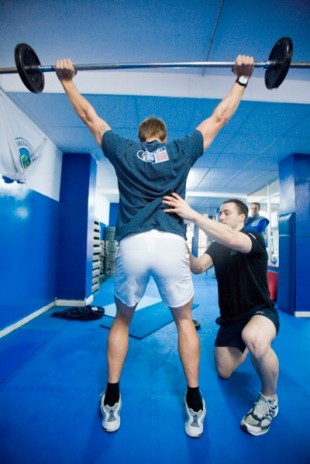
You’ve done the legwork to get fit, but even though you may feel raring to go there are still a few things to consider to really get you physically ready before you go afloat.
Body fuelGet a good breakfast inside you before you head out. Bananas, porridge, anything that’s going to slowly release energy during the day, and also make sure you’re hydrated well. Hydration is absolutely critical.
Being sufficiently fuelled and hydrated are really important in delaying fatigue, and as we’ve already noted, injuries are more likely to occur when you’re getting tired.
It’s not easy taking supplies onto the water but slip a few quick release energy gel sachets into your buoyancy aid to keep you going when you’re afloat. If you do have a small bag, nutritional energy bars are good too.
Warm upNo-one’s expecting you to do a full 30 minute shore side yoga routine before you go afloat but doing five minutes of mobility exercises and stretches is definitely a good idea.
The most common windsurfing injuries are lower back pain, shoulder strains and overuse injuries and tightness in the wrists and forearms, which comes from gripping the boom.
To warm up wrists and forearms ‘prayer stretches’ and flexing the joints will just get things loosened, while things like arm circles, hip rotation, arm extensions and knee bends will warm up the main joint groups. Remember, windsurfing is a head to toe sport, so start at the head and work your way down to make sure you don’t forget anywhere.
The first 10 minutes of a session, when you’re sailing out, should also be used as a warm-up opportunity. Go through a number of tacks and gybes and do some light pumping to gradually elevate your heart rate and warm your whole body up.
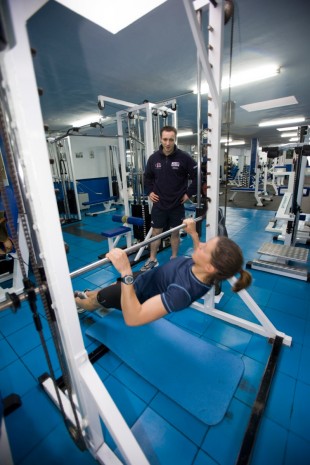
Its sheer physical nature makes windsurfing a great sport for being really fit.
The key to getting increasingly fit is being able to delay the onset of fatigue, meaning you can work harder for longer.
There are loads of drills you can do afloat to challenge yourself. Factor in things like long upwind or downwind legs to give you scope to increase pumping and do lots and lots of tacks and gybes. Do longer sessions or intense short, sharp sessions to the point of fatigue.
You can also work in certain heart rate zones. The most intense periods in any windsurfing race, where you’re working at 90-100% of maximum heart rate, is off the start line or at mark roundings. That can only be maintained for four or five seconds. However, you can improve your ‘anaerobic threshold’ – the point of exhaustion – by planning drills during which you work at 70-80 and 80-90% of your maximum heart rate.
Take it back downLike warming up, cooling down is really important in injury prevention.
Your sail in is your first chance to let your body gradually return to normal then priority number one once ashore is rehydrate and have something to eat. Ideally you would do some passive stretching – holding stretches for 30 seconds – straight off the water, but if you did a thorough stretch off later that evening that would be okay.
The most important thing is to keep it simple!
There are so many little things you can do on and off the water to make sure you stay fit to windsurf and really enjoy whatever Mother Nature may decides to throw at us this year!
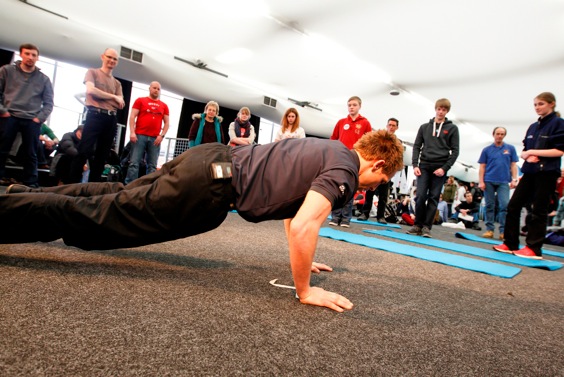
Love Windsurfing? Then why not join the association that promotes and protects, safe, successful and rewarding British windsurfing. Join today and support the RYA in protecting your rights and freedoms. Take advantage of free advice and support on a wide range of windsurfing topics; enjoy free third party insurance, as well as a fantastic range of personal member offers. Find out more by calling 0844 556 9556, email [email protected] or visit www.rya.org.uk

